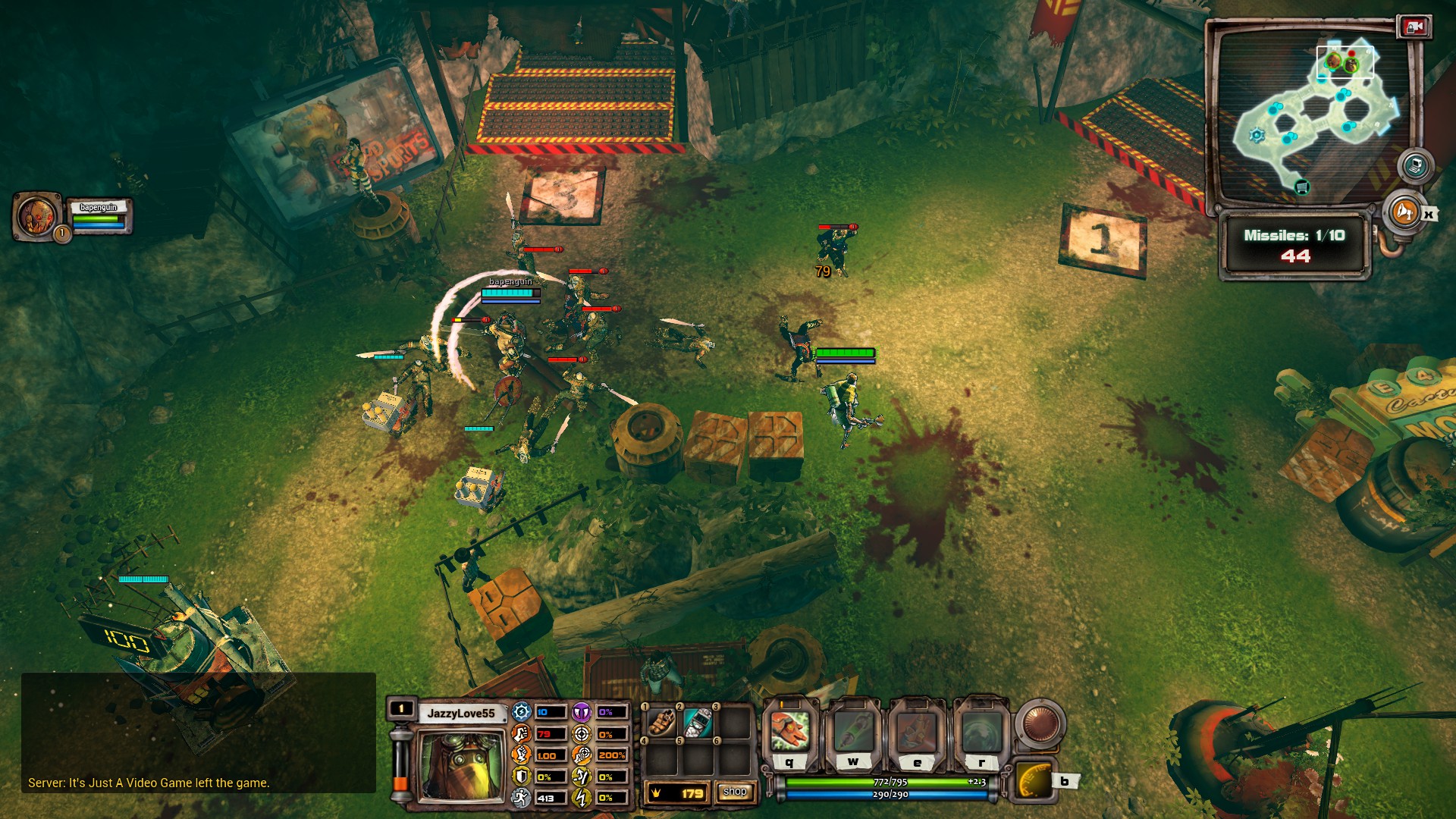I’ve spent years searching for a co-op game like Bloodsports.TV. While it shares many of its concepts with MOBAs, it drops many of the competitive metagame aspects - like laning, jungling, and last hit - and instead cultivates a friendly, team-based survival experience.
There is only one mode in Bloodsports.TV: co-op. You can run through the tutorial or set up a match for just yourself to test things out, but there are no campaign or competitive matches. All that’s left is straight up five-player, drop-in/drop-out, cooperative action. You’ll start each match (assuming you’re hosting) by choosing from one of the game’s six maps, setting the game difficulty, and finally selecting how many waves of enemies you feel like facing.
With those details sorted, it’s time to choose your hero. Bloodsports’ character roster is divided up into four classes - damage dealer, tank, crowd control, and healer - with two heroes per class. These are more than just palette swaps; each character has his or her own unique abilities that impact how they play. For example, one of the “healer” heroes has direct healing and support abilities, while the other is more aggressive, healing teammates by charging through them or directly damaging foes.
There is enough variance that players should be able to find a hero that suits their particular play style. Each class (and to a degree each hero) also has their own set of challenges to complete - called the “Path to Glory” - that apply stat bonuses to that class. This gives players a little extra incentive to try out all available classes and characters.

The typical match in Bloodsports.TV plays out across a series of enemy waves, with each wave getting tougher and adding more foes. The main goal for each wave is to slaughter all of the baddies before they can get to your team’s missile silo. Killing enemies nets you some experience and coins, and if you and your teammates successfully clear a wave, the missile launches toward your foes’ village. On the fourth, seventh, and tenth waves, you’ll have go toe-to-toe against a Boss. These guys not only give as good as they take: they also have their own unique abilities that can pose a different kind of challenge to you and your teammates.
Should a fellow hero fall, he or she can be revived by a teammate. If you set off on a rescue mission, though, be sure you’ve got a good four seconds’ worth of health and time in which to do it. Seeing a nearby downed friend naturally makes you want to come to his or her aid, but if their corpse is in the middle of a group of bloodthirsty enemies, that aid may never arrive. One player’s death usually won’t cause too many problems, but things have a way of quickly spiralling out of control once two players go down. Fortunately, a complete team wipe isn’t an immediate game over; it just gives your enemies plenty of time to make their way to your missile silo and destroy it.
In between waves there are also “creep” enemies that can be killed for bonus experience and cash. Some of these enemies are weak enough to be taken down by one or two players, while the most dreaded - the moose - is as tough as any boss and requires a team effort to subdue. I have died more times than I care to admit against that moose; it is not to be underestimated.
Much like in DOTA 2 or League of Legends, gaining enough experience eventually results in your hero leveling up. Each level gained nets you one skill point that you can use to power up one of your abilities. Those hard-earned coins you nabbed from fallen foes can be spent at the item shop to purchase equipment that increases your character’s stats. Low-level items can usually be purchased outright, while higher-level ones require you to purchase lower- and mid-tier items first and then combine them. With only six item slots to fill, though, you have to be picky about what to buy.
